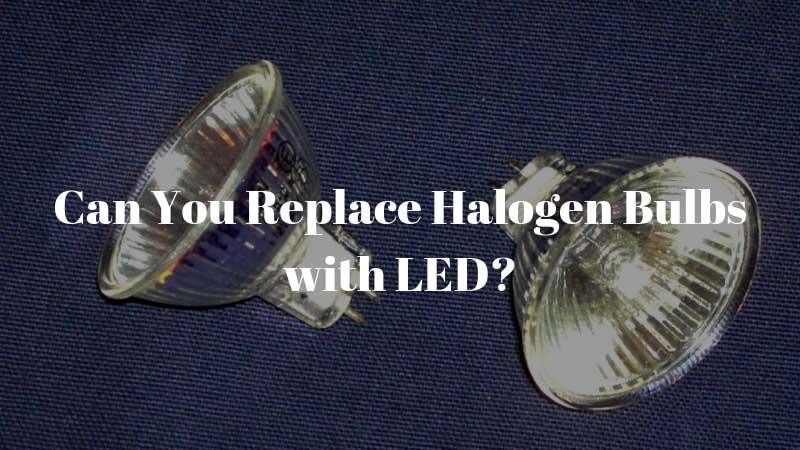Can You Replace Halogen Bulbs with LED?
Halogen bulbs are a bit old school, and LEDs are the modern alternative. Is it possible to upgrade?
Yes, it is definitely possible to do that. In fact, this is what happened in Europe last year when the EU banned halogen bulbs, encouraging people to replace their halogen bulbs with LED bulbs.
We are here to shed light on this question and take you through the things you will have to check or consider for a successful upgrade from halogen to LED.
Why the EU Switched Phased Out Halogen Bulbs in Favor of LED
The EU halogen bulb ban took effect on 1st September 2018. The EU effected the ban on grounds of energy efficiency and consumer savings.
LEDs are greener alternatives to halogen bulbs. The lifetime of LED bulbs is five to ten times longer that of halogen bulbs. Furthermore, LED bulbs use much less energy, and this significantly reduces your savings in the course of the year.
The EU did a study on the matter and found out that a switch from halogen to LED would save approximately €115 during the bulb’s lifetime and pay back its cost (LEDs are more expensive) within one year.
Furthermore, the EU found that switching over to LED bulbs would enable a significant cut in wastage, since consumers would require fewer bulbs per year.
Finally: LED bulbs are recyclable, but halogen bulbs aren’t.
Factors to Consider When Selecting LED Lights
1. Wattage
The LED lights that match the light output of your current halogen bulb will have a much smaller wattage, not the same at all. We are talking the 4W – 14W range.
For instance, a 7W LED is equal to a 100W incandescent bulb or a 24W CFL.
Therefore, before choosing the LED lights that will replace your halogen bulbs, figure out what Wattage corresponds to the light output you were getting from your halogen bulb.
The product descriptions typically provide details of the equivalent wattage in other bulb types. Most LED bulbs provide the equivalent wattage on the packaging.
Check the base of your halogen bulb’s globe to see the printed wattage.
If you can’t find the wattage information, try to estimate it. LED bulbs typically utilize 10% less power than their halogen counterparts. For instance, a 10-Watt LED is roughly equivalent to a 100-watt halogen bulb.
2. Color Temperature
Determine what sort of color temperature you want from your LED.
For instance, if you want a light that gives you a warm feel, go for bulbs labeled “warm white”.
On the other hand, if you prefer a light that is colder and cleaner, choose bulbs labeled “cool white”.
A color temperature of 2700 to 3000K will give you the warm glow of a typical halogen bulb. This color temperature range is popular for bedrooms and living areas in the home.
The lower numbers are the warm ones, while the higher ones are cooler. For instance, 4000 to 6000K will give you a modern, sterile, cool light. Most people use this color temperature range in bathrooms and kitchens.
3. Lumens
The lumens are the light output rating. The higher the lumens, the brighter the bulb.
To match the light output of most halogen bars, go for an LED bulb that provides 650 to 700 lumens, as that that is the light output provided by the average halogen bulb.
4. Beam
This is a rating which is expressed in degrees and provides the light beam’s angle coverage.
Higher values denote wider coverage, for instance 60 degrees.
5. Fitting
You should know the type of connector or fitting you have. Common fitting types include GU10, E27, MR16, and E14.
Each type of fitting requires a unique method of screwing or pushing it into the light fitting. They are not interchangeable.
Check the bottom of your current halogen bulb to see the connectors and use a ruler to measure the size of the fitting and the size of the cut-out for the bulb, information which will be useful when you are shopping for a replacement LED.
You could also find the size of the fitting printed on the socket.
240-volt GU10 bulbs have a 50 mm fitting and you can switch them for LED bubs without requiring any part replacement. You can identify them from their twist-and-lock fitting which has two prongs on the bottom.
Final Verdict
You can definitely replace your halogen bulbs with LED. In fact, if you ask the EU, it’s recommendable. Halogen bulbs were banned in the EU in favor of the more efficient and cost-effective LED lights. You can do the same for your home.

